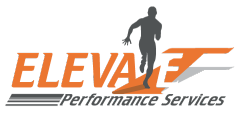 Iron is a trace mineral that is responsible for the transportation of oxygen into all of the body’s cells. It is a component of hemoglobin in red blood cells and myoglobin in muscle proteins making it essential for fitness and endurance. Iron toxicity is very dangerous, so your super smart body is equipped with mechanisms to ensure you never get to that point.
Iron is a trace mineral that is responsible for the transportation of oxygen into all of the body’s cells. It is a component of hemoglobin in red blood cells and myoglobin in muscle proteins making it essential for fitness and endurance. Iron toxicity is very dangerous, so your super smart body is equipped with mechanisms to ensure you never get to that point.
Most athletes never think twice about their iron status. But even a mild depletion in your iron levels can reduce maximum oxygen uptake, aerobic efficiency, and reduce the body’s overall capacity for endurance. The more depleted you become the more dramatic the effects. Over time if left untreated a deficiency will lead to anemia.
Ask any athlete who has been diagnosed with either, and they will tell you in vivid detail how it rules your life and changes everything about your training. They’ve run the gamut of these common signs and symptoms – low energy, fatigue, poor stamina, pale skin, an inability to focus and concentrate, headaches, feeling cold, and compromised immunity which leads to frequent illness. Many look back in awe of the quick and devastating impact it can have on an active life.
Athletes have a higher risk for depleting their iron stores than the general population.
Why?
Higher red blood cell turnover.
Typically the lifespan of a RBC is around 120 days. However, this lifespan is shortened with athletic training due to increased oxidative stress on the RBCs and the physical stress from ‘pounding the pavement’. If you don’t have enough iron to support the increased turnover in your red blood cells, you are going to be headed on the path to depletion.
Women have an added concern here due to menstruating each month. The additional blood loss reduces iron status even more, so women (18mg) do require more iron daily than men (8mg).
Higher production of hepcidin.
Hepcidin is a hormone produced by the liver that inhibits iron absorption and utilization. High intensity and endurance training cause the liver to produce more hepcidin. When you have higher hepcidin levels you will not be able to absorb iron as effectively from your food and the iron that has been absorbed will not have the capacity to function as it should within your body.
Higher carbohydrate diet.
Most athletes eat a diet fairly high in carbohydrates to compensate for their energy needs. Unfortunately the phytic acid found in nuts, seeds/legumes, and grains can also inhibit iron absorption.
What can you do?
If you are in good status and are taking the recommended daily amounts, the answer isn’t to overload on iron rich foods. More is not necessarily better!
The answer is to make sure the iron that you are consuming has the greatest chance of being absorbed and utilized by the body, so you never slide down the slippery slope into deficiency.
The two types of dietary iron are heme (animal) and non-heme (plant). Heme iron sources like red meat, animal livers, poultry, and fish are absorbed with greater efficiency than non-heme sources like lentils, beans leafy greens, and nuts.
The good news is that you can improve your absorption of non-heme iron with the following rules:
-
Break down phytic acid by soaking (and sprouting if you are adventurous) nuts, beans, and grains prior to cooking them.
-
Eat vitamin C rich foods in combination with non-heme foods. Examples are strawberries, lemon juice, oranges, all citrus fruits, tomatoes, green peppers.
-
Eat fermented foods in combination with non-heme foods. Examples are sauerkraut, miso, fermented veggies.
-
Eat vitamin A rich foods with non-heme foods. Examples include fish oil, egg yolk, livers, yellow and orange veggies.
-
Calcium rich foods.
-
High tannin teas and coffee.
-
Soy protein isolates. (Another reason to stay away from packaged foods!)
Have fun absorbing your iron!
Feel good, do what you love,

